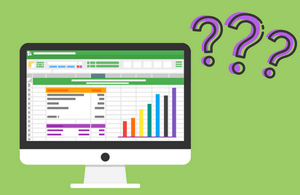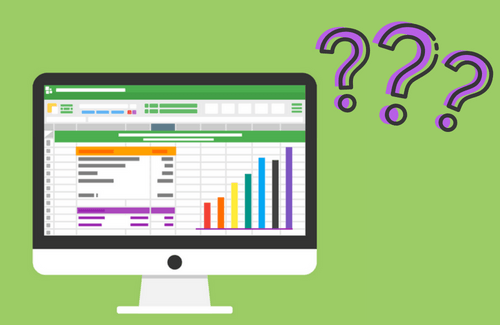 Have you ever found yourself engrossed in an in-depth business conversation only to catch yourself thinking “… wait – what’s turnover again?”
Have you ever found yourself engrossed in an in-depth business conversation only to catch yourself thinking “… wait – what’s turnover again?”
Whether you’re new to owning your own business or you’re a seasoned veteran, we all forget jargon from time to time. The lingo of business, the lingo of finance, and even the lingo of our own sectors – all definitions get dislodged in the old grey matter now and again.
Money is the most important part of business – you can’t be in business without it! Understanding what’s going on in your business from an accounting perspective is essential, but it can come wrapped in layers of overblown language.
We’ve identified 19 common business accounting terms and explained them here in plain English – a great cheat sheet for your next meeting with your accountant!
Accounts Payable (AP)
This refers to the money that your business owes but hasn’t paid yet, including both short and long-term debts. AP is considered a liability because it’s funds that your business owes. (See also: Liability)
Accounts Receivable (AR)
AR is money that is owed to your business by your customers, but hasn’t been paid yet. AR funds are considered an asset because your customers are legally obliged to pay, making that money effectively yours. (See also: Assets)
Assets
An asset is anything owned by a business that has an economic value. The term “assets” can cover tangible things like computers, buildings, and vehicles; financial things like cash on hand or accounts receivable; or intangible things like patents, brand identity, and customer lists. (See also: Accounts Receivable)
Bottom Line
This refers to the amount of money you’re left with after all of your expenses have been deducted from the money you’ve made (revenue). It’s called “bottom line” because it’s the last line shown on a traditional balance sheet.
Burn Rate
This is a rate calculated from monthly outgoing expenses that gives business owners and investors an idea of how much money is needed to keep a company operational for a set period of time.
Capital
Capital is all of the wealth that is held within a company, including the value of all assets, cash, and investments.
Cash Flow
This term has two slightly different definitions in business. In accounting, it generally means the difference in funds available at the start and end of a given period. But in more conversational terms, it is also used to refer to the flow of cash in, around, and out of a business.
Direct Costs
Also called Cost of Goods Sold or “COGS”, this is the total costs of materials and labour that are required to create your products or provide your service.
Expenses
This refers to money spent by a business, including operating costs, wages, rent, etc.
Factoring
Invoice factoring is the practice of selling on invoices to a factoring company, who may give the company selling the invoices all or part of the invoice value straight away (sometimes after taking a small fee). The customers listed on those invoices still have up to the due date to pay the full amount to the factoring company directly. Though the company using factoring may not receive the full amount in return, it does help with their cash flow.
Liabilities
Your liabilities are effectively everything your business owes to others – legal obligations to pay a certain figure to a certain entity by a certain date. Wages, expenses, and accounts payable are all examples of liabilities. (See also: Accounts Payable)
Markup
This is the amount that the cost of a product is inflated or multiplied by to cover the selling company’s expenses and overheads before the product is sold on. It can be referred to as a percentage (This product has a 40% markup) or by the multiplier used (this range has a markup of 2.5 – meaning the cost is multiplied by 2.5).
Overhead
These are the costs that a business incurs in order to operate. There are two schools of thought here – some say that overheads are all of a company’s operational expenses; however some maintain that overheads are just general passive expenses, things that aren’t directly related to the manufacture of the product they sell; things like rent, utilities, and office supplies.
Profit
Your profit is the figure that remains of your revenue (total income) once you deduct all expenses.
Profit Margin
Profit margin is a percentage ratio expressing how much profit is made out of total revenue. You calculate it by taking your total revenue and deducting total expenses, then you take that figure and divide it by total revenue, and finally multiplying by 100. Whack a “%” on the end and you’ll see what percentage of each pound you make is profit. (See also: Revenue)
Return on Investment (ROI)
This is a ratio which compares how much you spent on an investment with how much you made in profit as a result of that investment, expressed as a percentage. For example if you spent £100 on a marketing campaign which made £250 in profit, that’s an ROI of 150% (because 250 is 150% of 100). (See also: Profit)
Revenue
Revenue refers to the total income generated from sales before any deductions (like operating expenses or tax) are applied.
Turnover
The term turnover can mean a lot of different things in the financial and business worlds. However when someone asks “what’s your company’s turnover?” they’re generally asking what your company’s yearly revenue is. How nosey! (See also: Revenue)
Working Capital
This is the difference between a business’s assets (stuff the business owns) and liabilities (stuff the business owes). So basically your assets minus your liabilities equals your working capital.
[bctt tweet=”Puzzling over #accounting lingo? Check out this plain English financial jargon buster!” username=”yellbusiness”]
So that’s our list – hope you found it useful! Were there any terms on this list you were surprised by? Are there any terms you’ve grappled with in the past that you’d like to share? Let’s have a chat in the comments!






